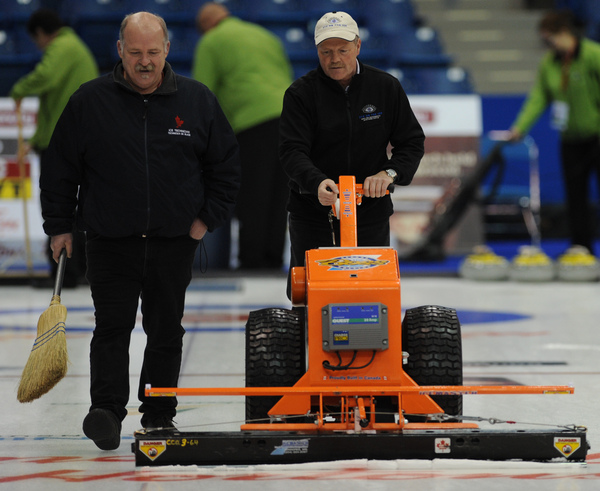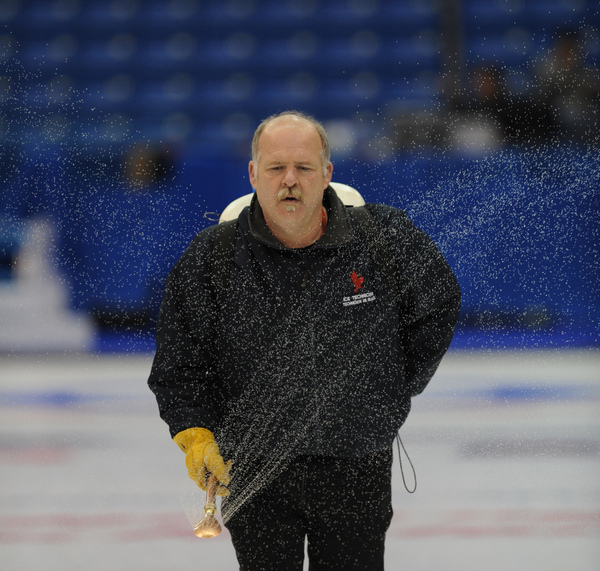Making Great Ice: A Day in the Life at a Curling Championship
Here we are at Day 21 in the stretch of ice making at two championship events: the Tim Hortons Brier and the Ford World Women’s Curling Championships. For the icemakers, this is what our typical day looks like.
Alarm gets us up about 5:30 a.m., and we arrive at the arena at 6:30 a.m.
Run water to the right PH and TDS.
Check compressors and set them to start pulling down ice surface to starting temperature.
Scrape ends and hot mop.
Re-pebble rock boxes.
Get blade on sheet to cool to same temperature.
Mop sheets and pebble for scrape.
Make sure air temperatures are good.
Scrape ice, checking blade on every sheet to ensure it is cutting true and ice is good.
Mop sheets and set stones for dragging.
Turn off all air before pebbling.
Make sure all proper bumpers are in place for game.
Pebble base 25 minutes before first practice.
Put top pebble on right after base. Nip ice, checking to see how much we are taking off.
After sheet is nipped, drag rocks and mop sheet.
Straighten rock handles and make sure everything is prepared for practice.
That is a typical morning if everything goes well. And we only have to do this two more times during the day. At the end of the last draw we mop the ice and pebble the slide path for night practices. Then we head back to our room, usually about 10:30 p.m.
And that is our typical day during an event.
Jamie Bourassa is the Canadian Curling Association’s Head Ice Technician






